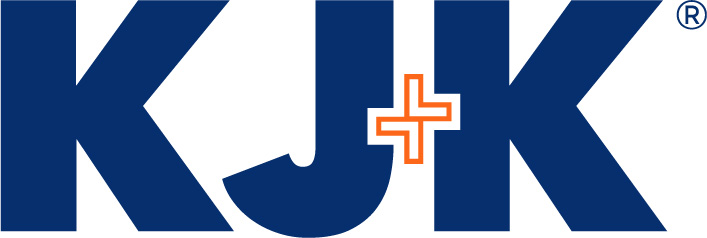By Scott Norcross & Paige Rabatin
 As the world reopens from its COVID-19 hibernation, businesses have continued anxiety as they recognize their customers are facing similar hardships. Businesses start by finalizing cash management plans, but are left with the realization that there’s no cash to manage if they can’t collect from customers and clients. Thus, step two is implementing a plan to ensure the best chance of collection. Handling the financial distress of clients is complicated, but below we provide a brief outline of important considerations for protecting your ability to collect payment during times of uncertainty.
As the world reopens from its COVID-19 hibernation, businesses have continued anxiety as they recognize their customers are facing similar hardships. Businesses start by finalizing cash management plans, but are left with the realization that there’s no cash to manage if they can’t collect from customers and clients. Thus, step two is implementing a plan to ensure the best chance of collection. Handling the financial distress of clients is complicated, but below we provide a brief outline of important considerations for protecting your ability to collect payment during times of uncertainty.
1. Recognize the Warning Signs
-
- Invoicing and aging reports continuously increasing in amount for a particular customer.
- Required financial disclosures from the client begin to slow or stop altogether.
- Officers leave the company for new positions or unexpectedly.
- Board members are resigning more frequently.
- The customer requests leniency or a new payment schedule.
2. Know Your Payment Terms
-
- Payables are the first thing to fall behind for distressed companies. You must proactively review payment terms and monitor collection rates to know exactly when payments become delinquent. Don’t make a bankruptcy preference your primary concern at this point. While a bankruptcy preference is a risk, there are critical timing issues and statutory elements that need to be met before there could be clawback or preference issue.
Seeking to collect from a long-term client during a pandemic is a difficult decision, but it will be easier now rather than later. Now is the time when most companies are looking for concessions or leeway. Although difficult, it is better to have the cash in hand now, because the longer nonpayment continues the more likely you’ll never be paid.It’s important to follow your contracts and agreements to the letter. Meticulously review your agreements to insure that you are aware of notice periods, cure periods, available remedies, requirements under the contract, and all other obligations to properly terminate. Understanding your agreements and available remedies will be critical if your economic situation worsens and you are forced to actively collect. - It’s important to follow your contracts and agreements to the letter. Meticulously review your agreements to insure that you are aware of notice periods, cure periods, available remedies, requirements under the contract, and all other obligations to properly terminate. Understanding your agreements and available remedies will be critical if your economic situation worsens and you are forced to actively collect.
- Payables are the first thing to fall behind for distressed companies. You must proactively review payment terms and monitor collection rates to know exactly when payments become delinquent. Don’t make a bankruptcy preference your primary concern at this point. While a bankruptcy preference is a risk, there are critical timing issues and statutory elements that need to be met before there could be clawback or preference issue.
3. Focus on Self-Protection
-
- Make a demand that payment terms change to Cash on Delivery or Cash Before Delivery.
- Request a guarantor and be willing to work creatively with your client regarding who could guarantee payment. The guarantor can be an officer, stakeholder, owner, bank or customer in certain circumstances. The best guarantor will be the party most dependent on the activity of the distressed entity.
- Request a security interest or additional collateral from your customer. You may want to request that client sign a security agreement providing a blanket lien.
4. Remedies
-
-
- Consider your options and whether you should first modify existing agreements or forbearance agreements. Determine whether you could improve your position, by having new collateral pledged, or obtaining a security interest, guaranty or modification of the existing agreement to further secure payment.
- If litigation is necessary, foreclosure, replevin, and UCC all may be options to collect payment.
- UCC remedies: When selling goods the UCC provides the right to demand “adequate assurance” from a customer that it can pay if the seller has “reasonable grounds for insecurity” for payment. As such, if it is “commercially reasonable” a seller has the right to adequate assurance that a customer can perform it obligations.
-
5. Customer Bankruptcy
-
- You will need to cease all litigation and collection efforts immediately based on the automatic stay.
- Cease any payments to the debtor to determine if you have offset rights.
- Analyze the bankruptcy filing to look at preference issues and determine the deadline to file proof of claims.
- Consider whether there are dischargability issues and whether such issues can be advanced in adversary proceeding under bankruptcy to prevent discharge of the debt.
This process boils down to knowing your rights, and knowing how you must perform to secure those rights. Even if your client is behind and you’re positive it will only get worse, follow proper procedures previously agreed to. Also, be open to creative solutions you and your client reach, to ensure you have the best chance possible of receiving payment.
If you have questions or would like to discuss further, please reach out to Scott Norcross (san@kjk.com; 216.736.7264) or Paige Rabatin (pmr@kjk.com; 216.736.7270).
